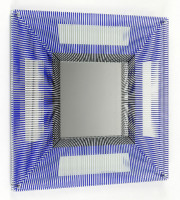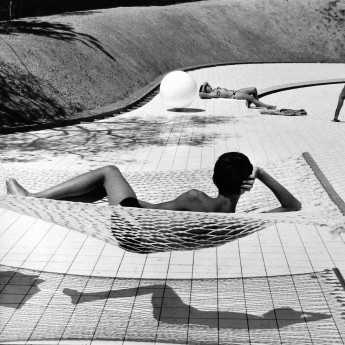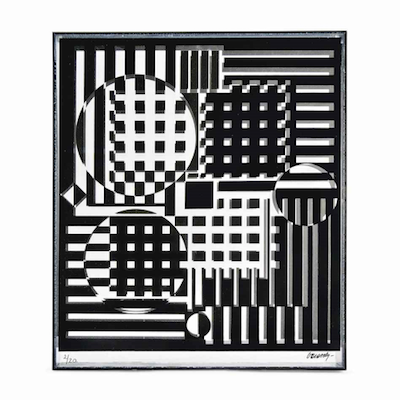
Details
Artist
Styles
// Rogelio Polesello’s Ágata, a 1975 serigraph, is a striking example of his mastery in optical and geometric abstraction. The composition consists of intricate overlapping shapes, including circles, squares, and triangles, rendered in a rhythmic arrangement of vibrant colors such as orange, red, and purple. The meticulous layering and alignment of lines create a pulsating, three-dimensional effect that seems to shift and vibrate, inviting the viewer’s eyes to follow the intricate pathways within the shapes. Polesello, known for his work in Op Art, uses color and form to produce an illusion of movement and depth, challenging perceptions and engaging the viewer in an active visual experience. This piece, part of a limited edition of 200, showcases Polesello’s ability to blend mathematical precision with vibrant artistry, resulting in a mesmerizing optical work.
Ágata, 1975
form
Medium
Size
57 x 75 cm
- Inches
- Centimeters
Edition
Price
Details
Artist
Styles
// Rogelio Polesello’s Ágata, a 1975 serigraph, is a striking example of his mastery in optical and geometric abstraction. The composition consists of intricate overlapping shapes, including circles, squares, and triangles, rendered in a rhythmic arrangement of vibrant colors such as orange, red, and purple. The meticulous layering and alignment of lines create a pulsating, three-dimensional effect that seems to shift and vibrate, inviting the viewer’s eyes to follow the intricate pathways within the shapes. Polesello, known for his work in Op Art, uses color and form to produce an illusion of movement and depth, challenging perceptions and engaging the viewer in an active visual experience. This piece, part of a limited edition of 200, showcases Polesello’s ability to blend mathematical precision with vibrant artistry, resulting in a mesmerizing optical work.
What is Op Art?
Op Art is a visual art style that uses optical illusions to create the impression of movement, vibrating patterns, flashing, or hidden images. The works are typically abstract, with many well-known pieces in black and white. The roots of Op Art can be traced back to earlier movements like Futurism, Constructivism, Dada, and Neo-Impressionism, particularly in their use of color effects and graphic design.











